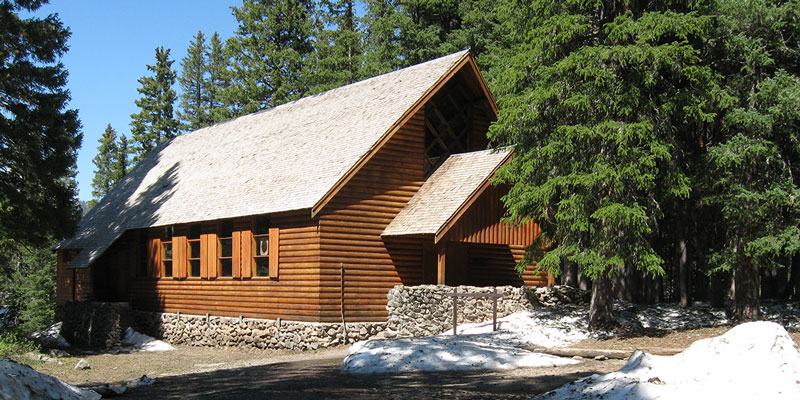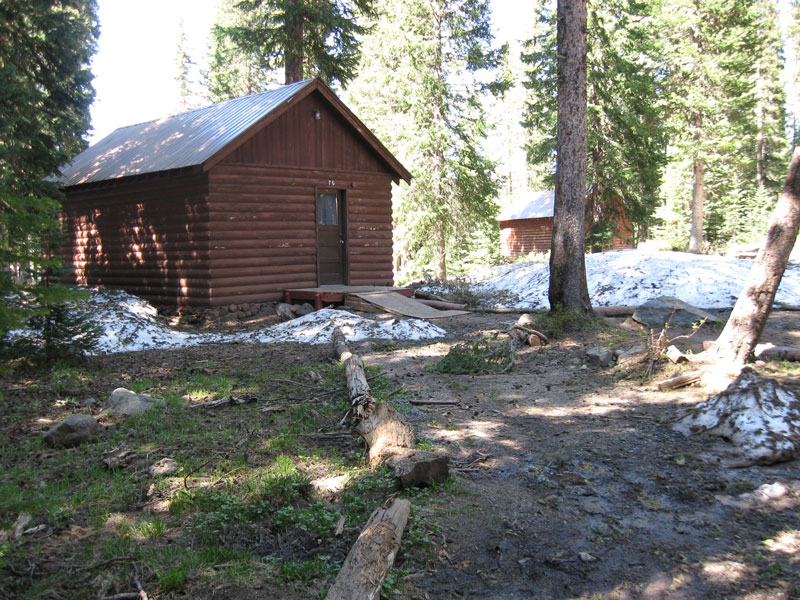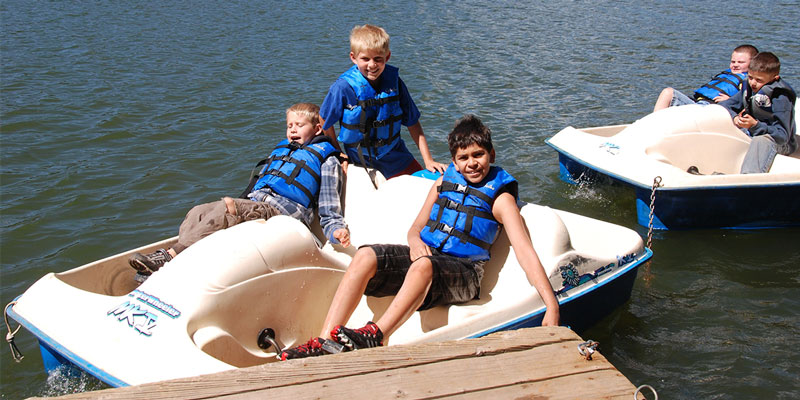Grand Mesa
by Nona Kelley Carver
When God created mountaintops,
He threw the book away,
and said, “I’ll make Grand Mesa
a place where folks can play.”
He flattened out the top of it
with pressure from his hand
and planted it with spruce trees.
The scale of it was grand!
He used His thumb to imprint
the many lakes and streams.
He broke the surface of the earth,
flowed lava through its seams.
He sowed the seeds of larkspur
and sage and columbine.
He dampened it with showers,
then bade the sun to shine.
Then He invited bluebirds.
and taught them where to nest,
walked hand in hand with nature.
He really did His best!
He warmed it in the summer
so aspen trees could grow,
and cooled it in the winter
with flakes of sparkling snow.
He filled the lakes with rainbows,
caught on the sides of trout,
created dens of black bear,
and scattered deer about.
He brushed it in the autumn
with aspen leaves of gold,
and asked the lakes to sparkle
with water deep and cold.
And so, we have Grand Mesa.
May all her gifts be shared.
A playground in the Rockies
of beauty uncompared.
Grand Mesa Camp History
Sources: Delta County Independent, August 20th, 1970 and updated by Bonnie Talbott in March 2007.
The Grand Mesa Youth Association campground on the beautiful Baron Lake began in 1917 with a tent in the woods, erected by the Methodist. The first permanent building was a T-shaped log structure with a stone fireplace at one end. It served as a chapel, dining room and girls dorm — the boys tented for a while longer. There was no kitchen in that building then — cook stoves were set up out in the open. Dishes were washed by dunking them in wash tubs of boiling water heated on the stoves. One winter the snow collapsed the roof of that building so they started rebuilding with the Columbine Chapel, which has since been remodeled into the recreation hall. Later a dining room and a dorm were constructed.Drinking water was hauled in, and all other water was hand-pumped from the lake. Nothing but the cook stove was heated, thus kids were advised to bring huge bedrolls. Boating, fishing, swimming, horseback riding, moonlight and Crag-Crest hikes were as popular then as now, and some of the topic questions the young folks were debating in the 1930’s were ‘What Shall I Do With My Life?” and ”What and Why is the Church?”

Baptist Campers — Camping for young Baptists started in 1923 with the Western Colorado Baptist Assembly which first rallied at Eckert, then for a couple of years at Cedaredge, and after that rented the Methodist camp on Grand Mesa which was called Mesa Epworth League Institute grounds.
By 1927 it had grown to include Baptist young people from all over Western Colorado. The records show costs of $1 for registration and 35 cents per meal. The cost of renting the campground for one week was $143.50. The Baptists held a Golden Anniversary celebration in 1977 reminiscing about their 50 years of camping here.
As the camp enlarged and times modernized, the Forest Service required the installation of sanitary facilities — flush toilets and showers which were built in 1948. Because of low funds, it was decided by the Baptist and Methodist to become joint owners of the camp in the late 1940’s. One of the agreements of the charter was that whatever one denomination contributed to the camp the other would match.
Thus it was that when Mrs. Haldane of Grand Junction donated money to build the present beautiful — Christ’s Chapel, it was not long before a spacious new dining room and kitchen — McQuery Hall — was erected as the Baptist’s matching contribution. The girls’ dorm was remodeled into an administration and crafts building — Barnett Craft Hall, Columbine Chapel remodeled into Columbine Recreation Hall and one by one the old cabins (which had been sponsored by and named for individual churches in the area) were replaced.
There are now six cabins for boys and seven for girls. Counting beds available in other buildings, the camp is licensed for 150 young campers at one time. A sickbay cabin with accommodations for the camp nurse and a for the cooks have been added. The latest modernizing project was the installation of gas heat in all the cabins.
In 1970 the cost of spending a week at camp — food, lodging and fees ranged from $13 to $25 depending on age and group. During July and August the Baptist and the Methodist each hold 3 or 4 weeks of camp for campers of all ages — children, youth and family camps. The camp is rented to other churches and organizations when not being used by the owner groups. Because we had allowed our incorporation to lapse, we re-incorporate as GMCA a not-for-profit organization. Attorney at law John W. Groves handled the matter for the Association. Grand Mesa Christian Association Inc. — GMCA — was organized.
June 5, 1978. The two members of Corporation are The Rocky Mountain Conference of the United Methodist Church and the American Baptist Churches of the Rocky Mountains. In 2006, the Baptist ownership changed from ”ABCRM” to “Grand Mesa Baptist Assembly.
In the Spring of 1978, McQuery Dining Hall roof collapsed from the massive snow load. Considerable discussion followed on the manner in which the building should be reconstructed, with opinion favoring increasing the pitch of the roof. The Building Committee was authorized to select advisory persons to assist in their work and planning.
It was the feeling of the Trustees that camp schedules should proceed without change for the coming season. And that plans be made to have an operating kitchen for the camps by whatever means seem best. Now for the first time in fifty years, the camp will own its own ”water right,” thanks to a gift from Wendell Williamson of Austin in 1980. This is an almost priceless as the water rights are so rarely available.

The cabins — although structurally sound — continually need special maintenance work such as outside refinishing and interior renewal. Therefore — Adopt a Cabin — reinstated the old idea of individual churches providing for a specific cabin. April 30, 1983, Columbine Recreation Hall roof succumbed to heavy snow load. By the of 1984, the remodel and structural strengthening of Columbine Recreation Hall was basically completed. Thanks to a tremendous amount of volunteer work.
At a 2003 Work Camp, Art Flanigan reminisced that he had never had a more enjoyable job than the time that he was General Contractor for rebuilding the Camp Dining Hall and Recreation Hall after the snow had caved in the roofs. Every day he’d go to work and always had one to 30 capable volunteers eager to help.
1984 Costs of operating the camp, based upon a 10 week season, are about $ 1200 per week. When late opening or closing would permit only 8 weeks, the cost would amount to $1500 per week.
Maintenance building planned 1985 completed 1987. Thanks to a special gift, the dream of a maintenance building for servicing some 25 buildings, 26 acres of grounds, two separate sewage treatment systems, three water systems, vehicles, tractors, boats, snowmobiles, etc is closer to reality. Basically, an enlarged two car garage is planned. Included will be a loft to provide winter access and a super strong roof designed to hold a hill winter’s weight of snow. The Trustees elected to withhold building the mezzanine floor until a later time if a need is established. The next project is to outfit the shop with adequate tools for maintenance of the camp buildings, facilities, utilities, and equipment. Funds for this project will come from the George Wick and Mark Elliott memorials.


New docks have been constructed with foam flotation and are truly a fine and much-needed addition to the boating program.
Much TLC has gone into tree planting — beautifying the parking area and in improving and maintaining the scenic Amphitheater (campfire area), Morning Watch area with the gorgeous, inspiring view across Baron Lake with the Rimrock in the background and the camp trails.

In 1987 it was noted that Art Flanigan has been working on various projects for Grand Mesa Christian Association for about ten years. It started when Art began helping on “work day” projects, and then his special talents were needed to oversee the rebuilding of the dining hall. Next followed the GMCA Lodge and before that and other projects were completed, the Recreation Hall demanded immediate attention. Art can’t be called a regular employee because he operates as an independent contractor and donates one-half the normal charge for such service.
In 1987 when Cliff Baldridge of Montrose was honored for 25 plus years as Trustee most of them as secretary, it was noted that organized Christian camping has occurred on Grand Mesa for seventy years now. In some ways, there are a lot of changes in the camp since the Methodist pitched their tent in 1917. Certainly, there are some rather fine structures, and operations are much more complicated. Yet the basic ingredient is God on the mountain top & still mountain top experiences are what it’s all about.
The Trustees in 2007 request that the second week in June each year be declared Grand Mesa Camp Week, with a special offering taken in the supporting churches for the camping program. One-half of the money collected is to be designated for the GMCA Endowment fund and the other half is to go into the Permanent Improvement Fund.
The Endowment Fund is a project to benefit campers by allowing rates to stay low and hopefully within reach of anyone to join the fellowship in a Christian camping experience. The goal is to build the Endowment Fund which is invested with the interest only being used the basic costs of camp operation such as insurance, utilities, etc.
